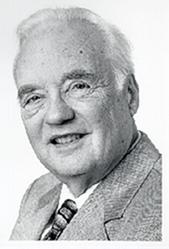Mendel Sachs (nonfiction)
Mendel Sachs (April 13, 1927 – May 5, 2012) was an American theoretical physicist. His scientific work includes the proposal of a unified field theory that brings together the weak force, strong force, electromagnetism, and gravity.
Sachs progressed towards completing Albert Einstein's unified field theory, i.e. unifying the fields in general relativity, from which quantum mechanics emerges under certain conditions.
His theory rests on three axioms. The general idea is
- (1) to make precise the principle of relativity, aka general covariance. To do this, Sachs found, requires
- (2) generalizing Einstein's Mach principle, positing that all manifestations of matter, not only inertial mass, derive from the interaction of matter. From this,
- (3) quantum mechanics can be seen to emerge via the correspondence principle, as a nonrelativistic approximation for a theory of inertia in relativity.
The result is a continuous quaternion-based formalism modeling all manifestations of matter. Sachs called the transformation symmetry group that Einstein sought in completing general covariance 'the Einstein group', which approaches the Poincaré group towards the flat spacetime of special relativity. Sachs described how quantum mechanics, first in relativistic two-component spinor form, and then under low energy-momentum as Schrödinger's equation emerges therefrom.
Quoting Sachs, "...by dropping the (unnecessary) space and time reflection symmetry elements from Einstein's field equations, they factorize from 10 independent relations to 16 independent relations. This generalization then yielded a unified field theory of gravitation and electromagnetism. This factorization is entirely analogous to Dirac's factorization of the Klein Gordon equation to yield the special relativistic spinor form of Schrödinger's wave mechanics."
In the News
Fiction cross-reference
Nonfiction cross-reference
- Albert Einstein (nonfiction)
- Physicist (nonfiction)
- Hideki Yukawa (nonfiction) - Doctoral advisor
External links:
- Mendel Sachs @ Wikipedia
